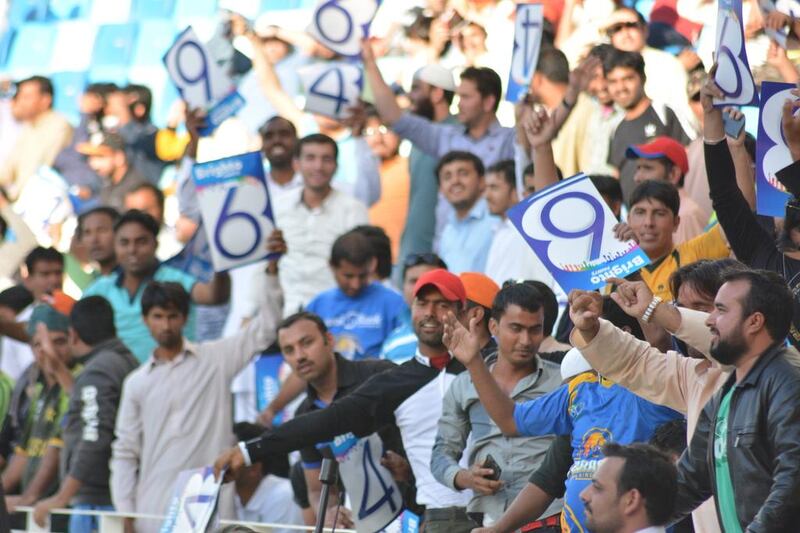Here is a question difficult to ignore after the first three days of the Pakistan Super League (PSL): how much of the success of a Twenty20 league is dependent on the boundaries and sixes its batsmen hit?
We are led to believe of course that it is directly related – the more that are hit, the better the league is. That is, we are told and sold, the essence of the format. Fans, we assume, only enjoy fours and sixes.
The boundary counter, somewhere on your TV screen, has become an important visual, a de facto USP of most leagues, ticking along as ceaselessly as the modern athletes’ air miles account.
The game gives in. Bats become more powerful. Boundary ropes start creeping in. Sponsors’ cravings, to be heard every time one is hit, want more, so that their names are heard more often on air.
Four matches into the PSL, however, the boundary counter is pottering along, a friendly Sunday promenade of boundaries rather than the mad rush into oblivion of other leagues.
It is a small sample size, but 84 fours and 33 sixes represents a sedate haul. There has been no hundred. No team has totalled even 150, a score at the lowest end of most team’s ambitions over 20 overs (the highest till halfway through yesterday was Karachi Kings’ 147 for seven).
Read more: Ahmed Shehzad shows Pakistan selectors his quality in Quetta Gladiators win
There has been no rat-a-tat-tat burst of boundary-hitting yet, no audacious feat of batsmanship that leaves both senses and statistics scrambled.
Sharjah, where some in the Masters Champions League (MCL) are currently producing batting feats the format is more used to, is likely to change matters when the PSL moves there this week.
There, the pitch has regained that old, familiar glassy sheen. In Dubai though, the surface has been slow, more favourable to spin, not stroke-making. The ball has gripped and not come on to the bat. Fast bowlers have located productive lengths on it.
The boundaries have also been deliberately left bigger than what you may find around the world. The straight boundaries from either end are at least 80m; the longest is 83m at deep midwicket from the commentary end.
And you know what? It has been, from a cricketing point of view, no less compelling for it.
None of the matches have been especially close as contests but because bowlers have been in the game, they have contained what is the basic requirement of all sporting contests: the idea of equality.
Take Friday night’s game between Peshawar Zalmi and Islamabad United. Peshawar won comfortably enough but realising that the pace of Wahab Riaz and Shaun Tait was a strength and not liability was a reawakening to the forgotten possibilities of the format.
Watching left-arm spinners construct classic left-arm spinner dismissals has brought the exhilarating rush to the head of emancipation. Batsmen have had to work out how to build totals and find boundaries, knowing that mis-hits will result in dismissals not boundaries. They have had to run hard.
Consequently, it has felt like cricket and not, as Twenty20 can often feel, like a gross distortion of the game.
osamiuddin@thenational.ae
Follow us on Twitter @NatSportUAE
Like us on Facebook at facebook.com/TheNationalSport





